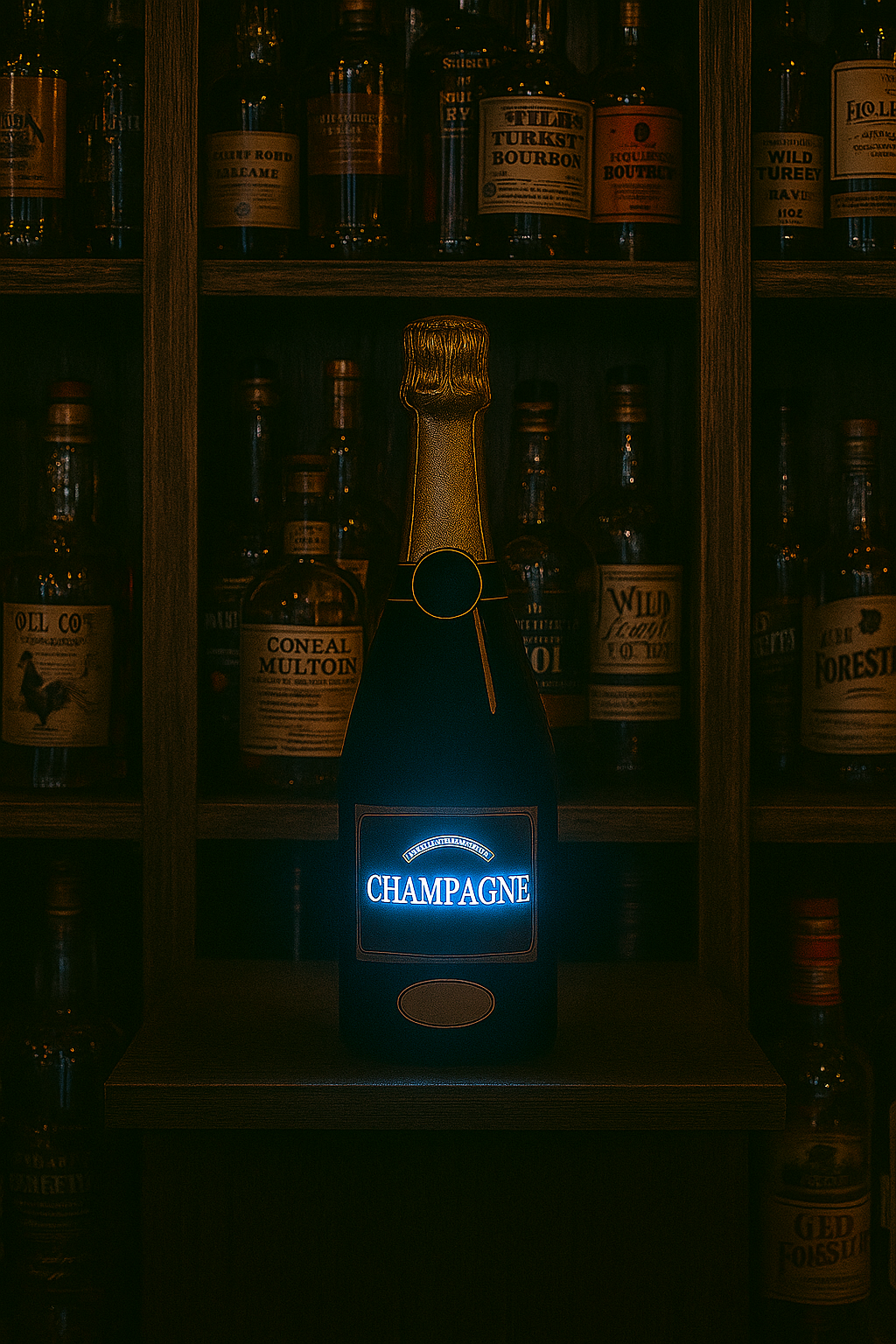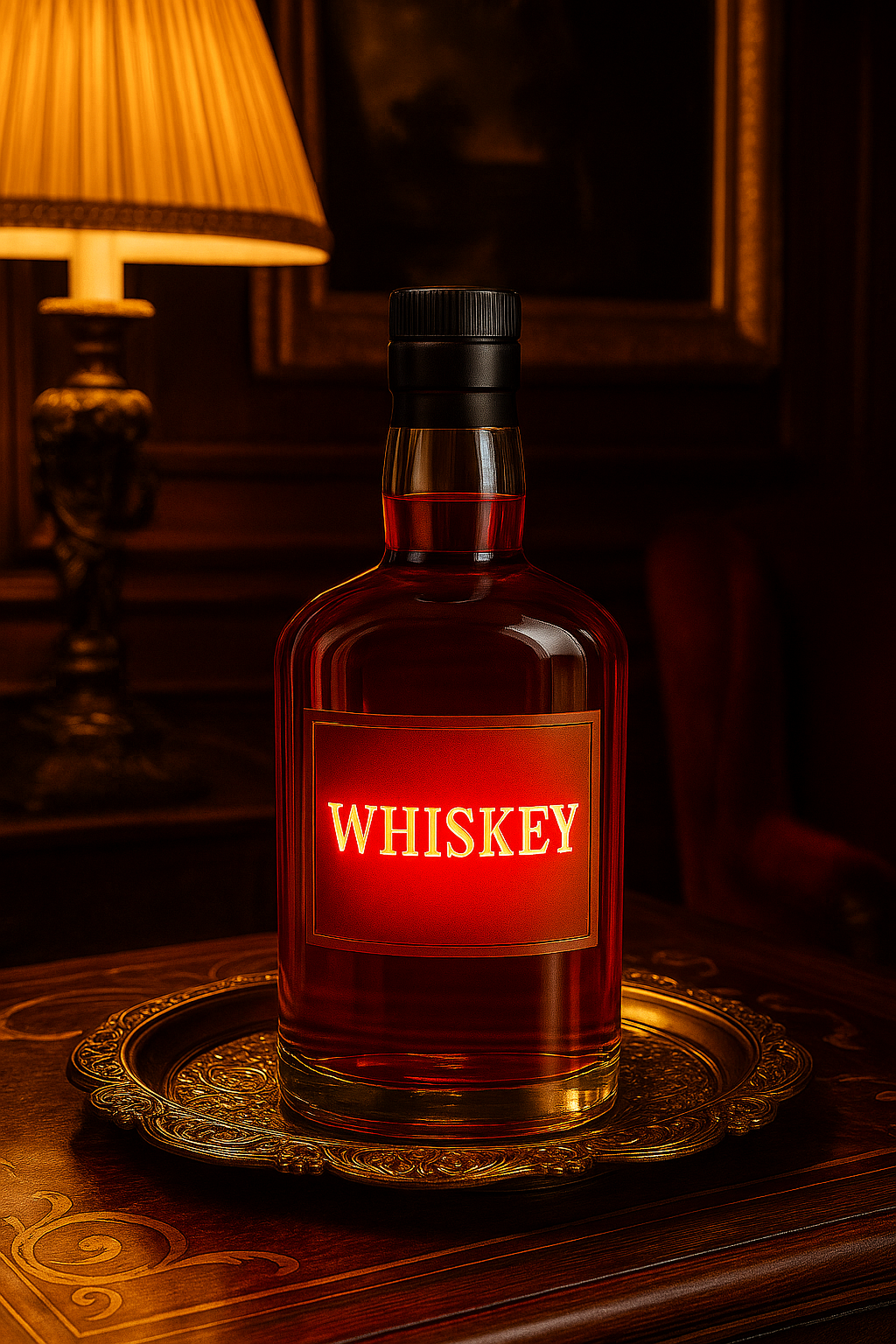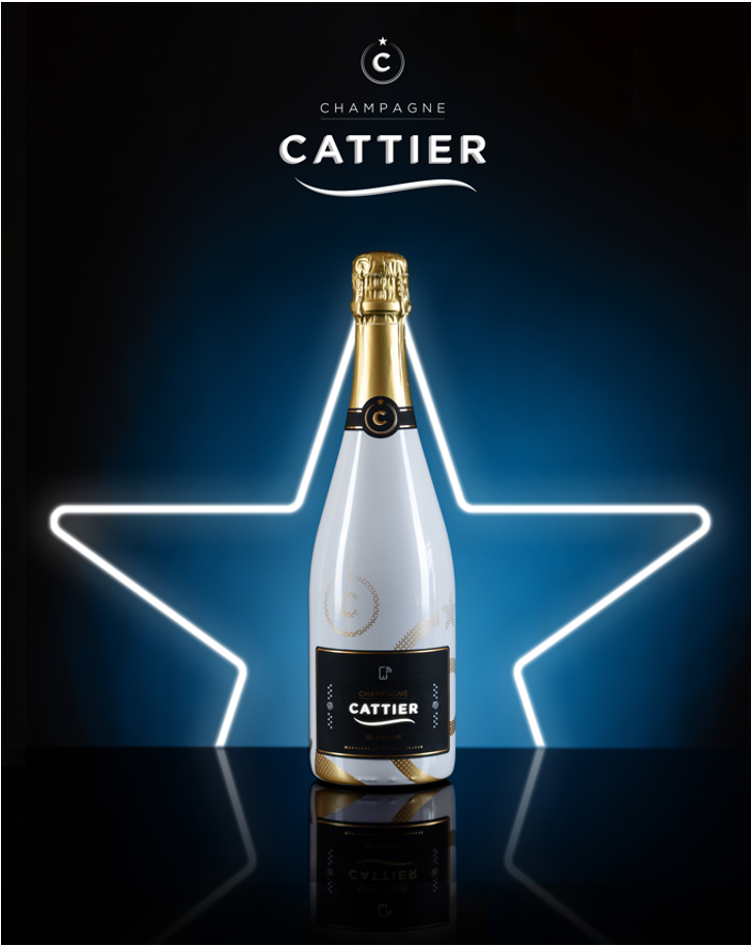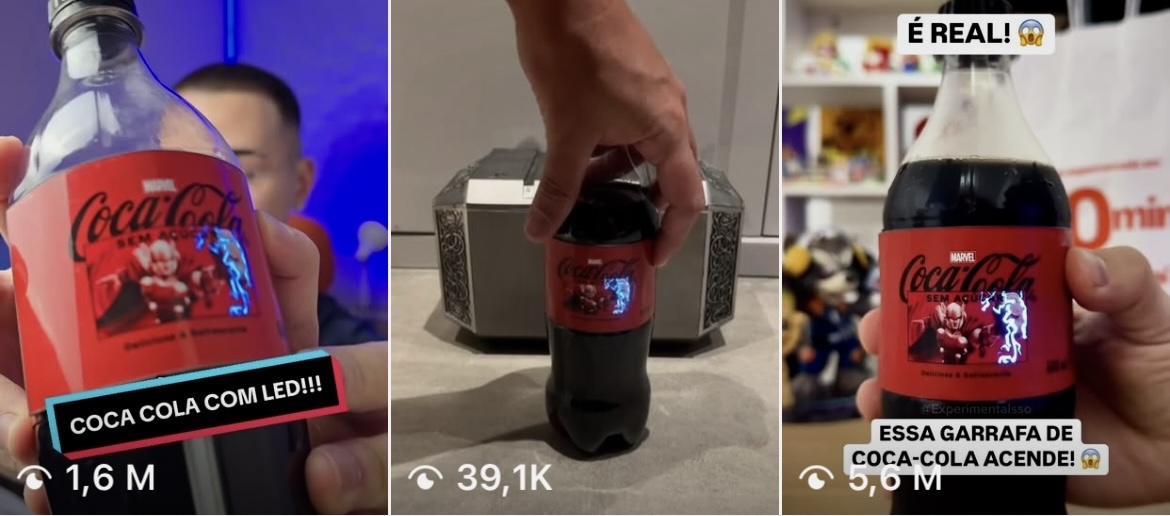Light-up labels enhance brand presence by capturing immediate visual attention, elevating product memorability, and communicating innovation. OLED-integrated labels turn packaging into an immersive brand experience, especially in nightlife and event settings. They help premium products stand out, boost engagement, and create shareable moments that strengthen customer connection and brand recall.
In the age of visual competition, brands are fighting for mere seconds of attention. In bars, clubs, and experiential events, where ambient lighting is low and distractions are high, traditional paper labels fade into the background. Light-up labels, powered by printed OLED technology, change that equation—making bottles, boxes, and products impossible to ignore.

Inuru specializes in printable, sustainable OLED labels that activate on touch, sound, or motion. These glowing labels don’t just illuminate—they interact, helping brands capture attention, communicate messages in real-time, and leave a lasting impression.
This article explores how light-up labels enhance brand presence, grounded in psychology, neuroscience, packaging science, and real marketing results.
Light is among the most powerful attention drivers in the human sensory hierarchy. It’s instant, primal, and unavoidable. Studies in environmental psychology show that our eyes are drawn to bright, dynamic stimuli—even more so in dark settings. This makes illumination an ideal strategy for crowded venues and retail spaces.
A 2020 study in the Journal of Environmental Psychology found that products emitting light received 55% more visual attention in dim environments compared to non-illuminated alternatives
Light also conveys premium value, modernity, and exclusivity. Brands like Inuru integrate light to help luxury packaging reflect innovation and exclusivity—critical in markets like premium alcohol, cosmetics, and fashion collaborations.
Light is not just a visual amplifier—it’s a psychological trigger deeply rooted in how humans process the world. From prehistoric times, our brains evolved to respond to light as a signal for attention, safety, energy, and emotion. In modern marketing, this translates into a tool that drives brand impact, decision-making, and emotional connection.
1. Visual Attention and the Brain
Numerous studies in neuroscience confirm that the human brain is wired to prioritize light and motion. According to research published in Frontiers in Psychology, visual stimuli that include light, contrast, or movement are more likely to activate the dorsal attention network, which governs goal-oriented visual focus.
In low-light settings like bars or concerts, products that emit light are not just easier to see—they dominate the visual field. The Colavita effect also shows that when conflicting sensory information is present (e.g., sound vs. visuals), we are more likely to trust and respond to what we see—especially if it’s illuminated.
2. Emotional Associations of Light and Color
Light influences mood, emotion, and behavior. According to Color Psychology research, warm lighting (red, amber) is associated with intimacy, energy, and luxury—common cues in nightlife marketing.

Cool lighting (blue, white) evokes calmness, cleanliness, and innovation. Studies from The Effects of Lighting on Consumers’ Emotions and Behavioral Intentions demonstrate that brighter lighting environments stimulate higher levels of arousal and perceived product attractiveness, especially in experiential or luxury contexts.

3. Memory Encoding and Recall
Light plays a key role in memory retention. According to consumer behavior studies published in the Journal of Consumer Research, stimuli that are unusual, unexpected, or dynamic are more likely to be encoded into long-term memory.
In other words: if a product glows—especially when others don’t—consumers are far more likely to remember the brand and associate it with innovation, exclusivity, or premium value. These attributes directly correlate with purchase behavior and brand loyalty.
4. Behavioral Triggers and Interactivity
The addition of light can also trigger approach behavior. A study from The Lighting Research Center found that people are more likely to physically approach or touch products that are brightly lit or illuminated from within. OLED-integrated labels take advantage of this natural inclination by encouraging users to engage—whether it's picking up the bottle, tapping it, or photographing it.
This engagement boosts brand interaction and serves as a tactile entry point into the consumer journey.
5. Cultural Universality of Light
Light transcends language and culture. Across global markets, light is associated with celebration (festivals, holidays), exclusivity (spotlights, VIP experiences), and performance (concerts, fashion shows). Brands that incorporate light into their packaging or promotions tap into a universal sensory language—making them more memorable and emotionally resonant across demographics and geographies.
Light-up labels offer much more than visual novelty—they deliver measurable benefits that impact visibility, engagement, customer retention, and ROI across various industries.
1. Increased Shelf Visibility
In crowded and dim environments—whether retail shelves, bar counters, or concert venues—standard printed packaging competes poorly for attention. Light-up OLED labels break this visual clutter with active illumination, drawing immediate consumer focus. According to Nielsen, up to 70% of purchasing decisions are made in-store, and standout packaging significantly affects buyer choice.
2. Higher Engagement & Brand Recall
When consumers see a glowing bottle, they don’t just look—they interact. Eye-tracking research from Tobii reveals that light-up products receive up to 3x longer gaze duration and a 63% higher recall rate. This translates into stronger associations and better long-term memory of the brand, especially in high-energy environments.
3. Premium Positioning & Perceived Value
Lighting conveys technology, exclusivity, and craftsmanship. A glowing bottle or luxury box positions the product as high-end, reinforcing the perception of quality. Inuru’s OLED solutions are especially relevant for brands in the premium alcohol, cosmetics, and gifting categories, where aesthetic value translates to price flexibility and higher customer expectations.
4. Enhanced Brand Storytelling
OLED labels can be customized to flash, fade, or animate in line with campaign themes or emotional tone. For instance, an energy drink label might pulse to mimic a heartbeat, while a celebratory wine might glow gold when opened. These sensory cues turn packaging into part of the narrative.
5. In-Store & Event Interactivity
Beyond aesthetics, OLED labels from Inuru can respond to motion, sound, or touch—enabling real-time consumer engagement. This elevates the retail or event experience and encourages exploration, trial, and deeper brand interaction.
Bars, nightclubs, and experiential events are among the most challenging environments for traditional branding. Lighting is low, sensory overload is high, and customers are distracted. That’s exactly where light-up labels shine—both literally and strategically.
1. Nightlife & Hospitality Visibility
In VIP lounges, bottle service trays, or behind-the-bar displays, light-up packaging makes products the center of attention. This visual emphasis translates directly into interest and sales, as glowing bottles stand out even when background lighting is dynamic or chaotic.
Real-world applications have shown that illuminated packaging can lead to 25–50% more interactions from patrons at point-of-consumption in venues. For example, illuminated vodka bottles on display are often requested over others simply due to visibility.
2. Immersive Branded Experiences
Imagine a product that glows when served, pulses to the beat of the music, or changes color when touched—this transforms an ordinary moment into a branded experience. Interactive OLEDs make products part of the entertainment, driving emotional connection.
Brands often deploy this during:
3. Event-Specific Customization
Inuru’s OLED labels are programmable and scalable, allowing brands to sync them with themes, holidays, or localized campaigns. A glowing champagne bottle for NYE, or a heart-pulsing label for Valentine’s Day, reinforces relevance and seasonal affinity.
4. Increased Purchase Intent
Ambient lighting usually diminishes branding effectiveness, but OLED labels bypass this limitation by becoming their own light source. As a result, glowing products are subconsciously perceived as more important or luxurious, which increases the likelihood of customer pick-up and purchase—even without a discount or promotion.
5. Social Magnet at Events
Light-up products become focal points in crowd photos and videos, making them naturally shareable. This supports “Instagrammable” moments and brand virality. For lifestyle and alcohol brands, this is a powerful form of earned media.

Touch-activated or motion-sensitive labels enable interactive packaging. In a marketing context, this means that each product becomes a micro-campaign. For example, a bottle could flash when picked up or glow brighter when two bottles “cheers” together.
According to the Journal of Marketing Theory and Practice, physical interaction with packaging boosts post-purchase satisfaction by 30%+.
Interactive OLEDs also:
And because Inuru’s technology doesn’t require thick batteries, brands can scale campaigns without major supply chain reengineering.
Immersive Product Experience
In premium segments like cosmetics, spirits, or luxury fashion collabs, packaging is part of the product. A glowing label during unboxing creates a multi-sensory moment that heightens perceived value and consumer delight.
A Deloitte consumer trust study found that 65% of customers trust brands that deliver immersive and memorable experiences.
OLED-enabled labels can create fade effects, dynamic light sequences, or thematic pulses (e.g., heartbeat for energy drinks), extending the brand story beyond the logo.
1. Eye-Tracking & Engagement
A Tobii Pro Lab study showed glowing products receive 3× longer fixation and 55% higher recall in nightlife scenarios.
2. Neuroscience Backing
Studies show that aesthetic packaging activates brain regions tied to emotion and decision-making, even when other products are cheaper or better known.
3. Packaging Conversion Impact
Up to 70% of buying decisions are made in front of the shelf. Visual standout through light directly influences conversions.
4. Social Sharing Behavior
In social settings, 67% of Gen Z and Millennials are more likely to share a product that lights up, moves, or reacts.
Branding is about memory—and nothing is more memorable than light. With OLED-integrated packaging, brands gain not just visual presence but emotional resonance.
From high-end spirits and cosmetics to limited-edition drops and nightlife marketing, light-up labels are changing how consumers perceive and interact with products.
Want to know more? Contact the Inuru Team to explore how illuminated packaging can activate your brand story.
SOURCES:
(3)https://www.diva-portal.org/smash/get/diva2%3A373890/FULLTEXT01.pdf
(4)https://pmc.ncbi.nlm.nih.gov/articles/PMC10117197/
(5)https://www.tobii.com/solutions/consumer-research-and-user-experience/packaging-research
(6)https://www.tobii.com/resource-center/customer-stories/eye-tracking-study-of-package-design
(7)https://attentioninsight.com/packaging-design-research/
(8)https://www.tandfonline.com/doi/abs/10.2753/MTP1069-6679190303
(9)https://www.cta.tech/press-releases/cta-research-exploring-gen-z-views-and-preferences-in-technology
(11)https://www.inuru.com/post/interactive-packaging-oled-technology
(12)https://pmc.ncbi.nlm.nih.gov/articles/PMC8933248/
(13)https://www.inuru.com/news/cattier-uses-luminous-labels-for-champagne
(14)https://www.inuru.com/news/engelbert-strauss-introduces-backpack-with-inuru-oled-technology